By Elizabeth Gierlowski-Kordesch
Argentina Blog, Sept. 21, 2014
After preparing all the lectures for the week-long short course on limnogeology, Dr. Cecilia Benavente from the University of Buenos Aires and I took a tour of the city on a bus called “Buenos Aires BUS”.
There are 25 bus stops of interest on this tour, and one can get off at any of the stops to board again on another of the army of buses that make the circuit of the city.
Buenos Aires was slowly built up by neighborhoods by immigrants over the last 200 years looking for a better life. The range of poor to rich is stark as in any big city and there are many parks and monuments to commemorate important events in Argentina, especially the revolution for independence from Spain (which finally occurred in 1816). Buenos Aires is stretched up from north to south along the estuary of the River La Plata on the eastern coast of southern South America. The area was initially full of river marshes that were slowly filled in to make room for industry and housing. Immigrants came from Spain, Italy, France, Poland, Germany, Sweden, Armenia, etc. over the last century to make this a true melting pot of culture, just like the United States.
Here I am on the upper deck of the bus listening to information on the neighborhood through which we are driving. There were about ten languages one could choose to hear the tour on earphones. One could spend days on this tour to explore the neighborhoods of Buenos Aires. The population of Buenos Aires proper is approximately three million people with a couple of million more in the outlying suburbs. Though the economy has been slowing of late, construction projects were present all over the tour route.
Here is the May Plaza, the heart of Argentina. This park memorializes the independence revolution that started on May 25, 1810 and successfully concluded on July 9, 1816. At the other end of the park is the Government House where the president of the country has offices. Close-‐up is below.
A very interesting neighborhood was “La Boca” where Italian immigrants came to live while working in the port along the river margin nearby (La Plata River). They built houses with whatever they could find within the port area. Some houses and apartment buildings are very colorful!
We also visited the oldest neighborhood of Buenos Aires just east of the Government House, called San Telmo. Cecilia and I ate lunch there in lovely old building. Here is a photo of me across the street from the restaurant. Note the cobblestone street.
Here is one of the many monuments set into a fountain. It is a gift from Spain to commemorate the 100th anniversary of the independence revolution. It is set in the middle of Avenue of the Liberator (Avenida del Liberator), honoring the general that led the revolution, Jose Francisco de San Martín. Also along this avenue are many museums, theaters, a race track, and a newly renovated planetarium. A true cultural center for Buenos Aires.
My favorite memorial is from Spain again for an anniversary of independence (I guess they hold no grudges). It is of Don Quixote of La Mancha riding his loyal horse, Rocinante.
I certainly learned a lot about the history of Argentina and really feel I have seen a large portion of the city of Buenos Aires. Now I need to get ready for my short course that starts tomorrow!


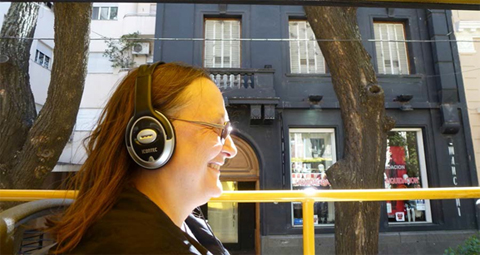
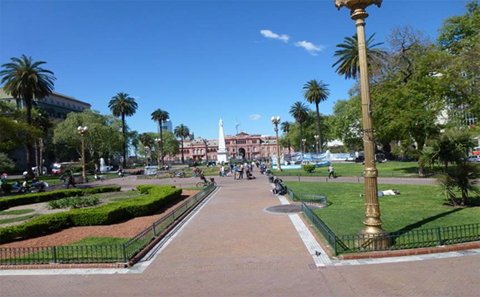
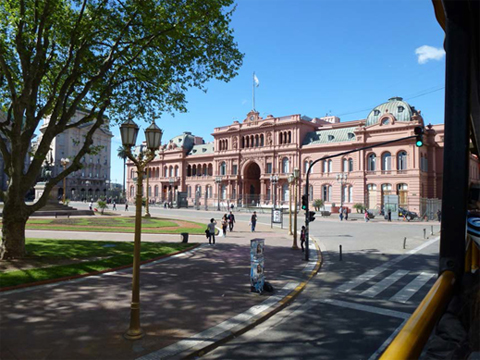
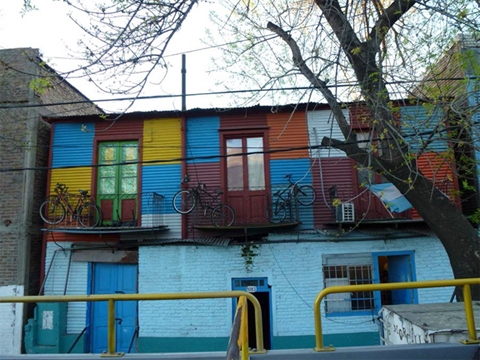

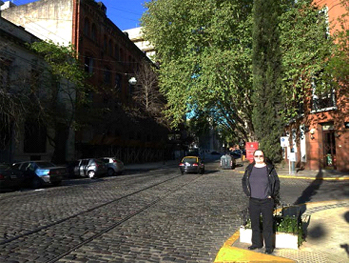
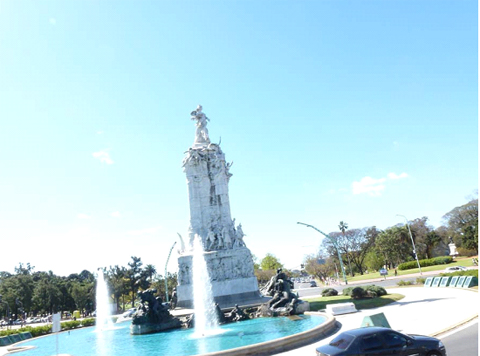
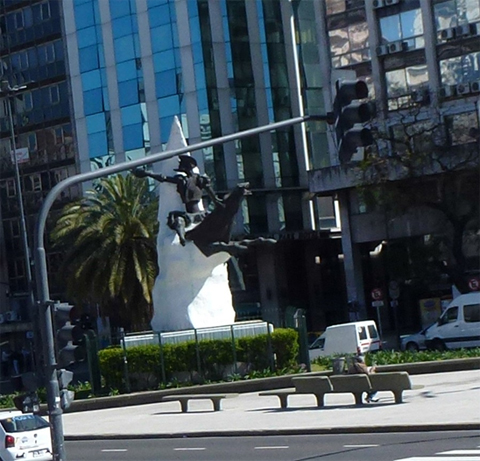

















Comments